Fitbit Charge 2 llega para sustituir dos modelos con un sólo producto. Charge 2 es el reemplazo para las versiones originales: Charge y Charge HR cuya diferencia era que la versión HR incluía el sensor de pulso óptico. Pues bien, en la nueva Charge 2 encontrarás este sensor óptico por defecto.
No hay grandes novedades, pero sí un cambio importante en tamaño de pantalla y en calidad de materiales usados.
La pulsera de esta prueba ha sido cedida temporalmente por parte de Fitbit. Así que tras completar la prueba se enviará de vuelta por donde ha venido. Es importante que entiendas esto, porque las pruebas que realizo y mis opiniones de los productos son totalmente independientes, no hay remuneración de ningún tipo por parte de las marcas.
Recuerda que si quieres mostrar tu gratitud por las pruebas que realizo y quieres ayudar a soportar la página, puedes comprar la pulsera a través de lo enlaces que facilito. De esa manera recibo una pequeña comisión por cada reloj, que es lo que permite que continúe esta página web y cubre parte del trabajo realizo en ella.
Llevo algo más de un mes con la pulsera en la muñeca usándola en perfiles muy diferentes, así que ya nos conocemos perfectamente. ¿Preparado para saber TODO lo que debes saber sobre la Fitbit Charge 2 y nadie te ha contado?
Navegar a secciones específicas
Desempaquetado
Dentro de la caja de Fitbit Charge 2 no hay mucho contenido. No es excesivamente grande.
Esto es lo que encontrarás dentro: La pulsera, unas cuantas guías de uso y el cable de carga.
Fitbit Charge 2 recuerda mucho a la primera versión de Charge, tanto en el diseño como en la textura de la correa.
Sólo hay un botón con el que poder controlar la pulsera. Pero varias formas de interactuar: pulsaciones cortas, pulsaciones largas o toques sobre la propia pulsera.
Pero el diseño ha mejorado. Ahora todo se desmonta. El monitor de actividad es sólo la parte central, mientras que la correa se puede reemplazar fácilmente gracias a un clip que tiene en cada extremo. No sólo para sustituirla en caso de desgaste, sino para cambiar la estética, ya que Fitbit ofrece multitud de correas diferentes tanto en textura como en colores.
En la parte trasera encontrarás el sensor de pulso óptico. No hay novedades, siendo el mismo hardware que Fitbit ha utilizado hasta ahora. Un sensor de tamaño generoso con un par de LED de color verde. Debajo encontrarás los pines de carga.
Y hablando de carga, la pinza es voluminosa, sujetando bien la pulsera. El propio botón principal sirve de guía, por lo que es fácil encajarla en el punto correcto.
Así que una vez que hemos conocido la pulsera por fuera, es momento de hablar de los aspectos básicos de la Fitbit Charge 2.
Aspectos básicos de Fitbit Charge 2
La Fitbit Charge 2 es, en esencia, un producto bastante similar a lo que hay actualmente en el mercado. No presenta novedades importantes con respecto al modelo que reemplaza (la Fitbit Charge HR) ni comparándolo con el resto de propuestas de otras marcas. Hay ligeras novedades respecto al software así como un diseño algo diferente, pero nada exagerado.
Sólo existe la posibilidad de hacerse con la Fitbit Charge 2 en su versión con sensor de pulso óptico, ya no existe una versión más económica sin dicha opción. Pero es normal, pues lo que antaño era una opción novedosa hoy se ha convertido en una característica prácticamente básica.
Con la renovación de la pulsera cambian aspectos de acabado. Principalmente la pantalla, que ahora es bastante más grande. Su tecnología sigue siendo OLED, permitiendo mostrar ahora varias líneas de texto.
Aunque en la publicidad de Fitbit se anuncie como pantalla táctil, no es tal. Sí responde a los toques en la pulsera, pero no por su pantalla. No se puede deslizar para cambiar entre pantallas, sino que responde a toques que se haga sobre ella gracias a su acelerómetro interno. Es decir, más que tocar en la pantalla debemos dar toques sobre ella.
El control principal se hace con el botón lateral. Pulsando brevemente cambiamos entre diferentes opciones (pulso, entrenamiento, cronómetro, etc), mientras que si lo mantienes pulsado inicias una actividad o accedes al menú en cuestión. Pero eso lo veremos más adelante.
El sensor de pulso es el clásico de Fitbit, permitiendo un seguimiento constante del pulso durante las 24 horas. Es el principal factor diferenciador con respecto a la competencia, aquello en lo que más destaca.
En definitiva, una pulsera de actividad se compone de varias funciones:
- Monitorización de actividad (de día y de noche)
- Grabación de entrenamientos
- Seguimiento del pulso durante las 24 horas (si incorpora sensor óptico)
- Notificaciones
¿Qué te parece si voy pasando entre estas funciones básicas? Vamos a ello.
Monitorización de actividad
La función principal de este tipo de pulseras es monitorizar tu actividad diaria, así que Fitbit Charge 2 no iba a ser menos. Esta función está siempre activa, siempre «escuchando». Estima tu nivel de actividad calculando tus pasos diarios, que traduce en distancia recorrida y en calorías consumidas (en conjunción con los datos de frecuencia cardíaca). Así mismo, gracias al altímetro barométrico que equipa también permite contabilizar la cantidad de pisos ascendidos por las escaleras (no colarán las trampas con el ascensor).
Los datos básicos de la actividad los verás en la pantalla principal. A través de la aplicación del teléfono puedes configurar la pantalla del reloj para que muestre diferentes opciones.
Hay opciones que incluyen datos básicos de actividad; y otras que son más estéticas pero ofrecen menos información. Pero elijas la que elijas, podrás ver todos los datos de actividad del día tocando la pantalla e irás alternando entre las varias opciones de visualización.
La pulsera está siempre conectada con el teléfono, por lo que irá actualizando los datos de actividad de forma constante. Es en la aplicación de Fitbit donde vas a encontrar detalles más concretos de tu actividad.
Podrás incluso ver datos de tu frecuencia cardíaca en ese preciso instante. Es el cuadro inferior derecho que puedes ver en esta captura (en ese instante, 57 pulsaciones por minuto).
También puedes revisar los datos de actividad en la web de Fitbit, pero la encuentro menos intuitiva que la aplicación. Y evidentemente siempre está más a mano.
Si hay algo en lo que Fitbit hace muy buen trabajo es en las notificaciones por objetivos alcanzados. En muchas ocasiones es frecuente que hagas caso a tu monitor de actividad durante la primera semana. Incluso dos semanas. Pero a partir de ese momento terminas por no mirar siquiera la actividad y llevas el monitor «por defecto».
Fitbit intenta mantener siempre tu motivación con notificaciones de objetivos conseguidos. Pero no objetivos que requieran de tu intervención para programarlos, sino de forma automática. Algo así como medallas y premios,
En la aplicación también encontrarás la nueva función de desafíos que Fitbit lanzó hace unos meses. Rutas virtuales por lugares especiales con secretos escondidos que, a medida que vayas acumulando pasos, podrás ir descubriendo en imágenes y retos.
Son diferentes maneras de promover tu actividad de diversas formas, intentando darte excusas para que salgas a pasear. Algo muy inteligente, porque va más allá del tradicional «sal a andar, que ya te daré una medalla más adelante».
Y si tenemos seguimiento de actividad durante el día, también hay seguimiento del sueño. En la pulsera no hay que activar ninguna opción especial, pero cuando se sincronizan los datos a la plataforma de Fitbit serán sus propios servidores los que interpreten qué es actividad y qué es periodo de descanso.
Podrás ver todos los detalles de tu sueño en la propia aplicación.
Y si seleccionas cualquiera de los días que aparece podrás ver en detalle cómo ha sido la noche.
Se pueden programar «objetivos de sueño». Es decir, tratar de dormir un tiempo determinado. La aplicación detectará cuál es tu hora habitual para despertarte y el tiempo de sueño medio que tienes, por lo que puedes intentar aumentarlo programando un aviso a través de una notificación (en el teléfono, no en la pulsera).
Dicha notificación simplemente te recordará que es hora de irse a la cama, nada más. Adicionalmente, puedes programar de forma directa una alarma de vibración para que te despierte a esa hora que ha detectado de forma automática.
Pero no hay ninguna función «inteligente» que determine cuándo es mejor levantarse. Algo que parecía lo último en tendencias hace un par de años parece que ya se ha olvidado. Lo cierto es que en mi caso, cuando he utilizado dispositivos de este tipo nunca me han despertado cuando más me convenía. Pero claro, siempre es molesto que te despierten…
Eso sí, la vibración de la pulsera es lo suficientemente potente como para despertarte del sueño más profundo. Y lo bueno es que es totalmente silencioso, por lo que si no duermes sólo, tu compañero de cama no tiene por qué enterarse que ya es tu hora de levantarte, pero no necesariamente la del resto de la familia.
Entrenar con Fitbit Charge 2
Con Fitbit Charge 2 no sólo podrás hacer un seguimiento de tu actividad diaria, su otra función principal es realizar el seguimiento de entrenamientos. Hay dos opciones para grabar los entrenamientos: de forma automática y de forma manual.
Función SmartTrack
La grabación automática, denominada SmartTrack, ya estaba presente en la Charge HR. Esta función permite reconocer de forma automática determinados ejercicios, apareciendo en la lista de actividades de forma separada. La información facilitada no es muy elevada, aunque sí tendrás datos básicos de frecuencia cardíaca, pasos y calorías consumidas.
El ejemplo que ves arriba es para un paseo de 18 minutos de duración. En ningún momento activé la función de entrenamiento para que grabara la actividad, es el propio servicio de Fitbit el que lo identifica.
Pero no es el único ejercicio que reconoce de forma automática. También reconoce carreras, cuando montas en bicicleta o cuando usas una bicicleta elíptica. En cada uno de estos casos etiquetará la actividad con el deporte practicado. Si estás realizando otro deporte con movimiento, como baloncesto o aerobic, se identificará una actividad de deporte aunque sin especificar de qué se trata.
Para que estas actividades queden grabadas de forma independiente al resto de tu actividad deben tener una duración de al menos 15 minutos. Es así por defecto, aunque es posible cambiar dicha configuración en las opciones de la aplicación entre 10 y 90 minutos.
Es una función que resulta muy útil cuando estás realizando actividad, pero no es un entrenamiento en sí mismo. Así que si simplemente estás dando un paseo o vas al trabajo en bici podrás contabilizar la actividad, sin ser un deporte en sí mismo. Cuantificación constante.
En la pantalla de tu Fitbit no se mostrará ninguna indicación de que esté grabando actividad, ni mostrará métricas específicas. La identificación de la actividad es automática por parte del servidor, tras sincronizar los diferentes datos y analizar los movimientos.
Modos de entrenamiento
A la hora de entrenar la principal novedad que encontramos en la Charge 2 es que, mientras que en la Charge HR simplemente teníamos un modo de entrenamiento genérico que englobaba todas las actividades, en la nueva pulsera podemos elegir hasta siete deportes diferentes en la pulsera (que se pueden definir a través de la apliacación).
De esta manera podrás especificar qué estás entrenando en cada momento (para después poder verlo en la aplicación) e incluso configurar si quieres usar el GPS para alguna actividad, como correr, ciclismo en exterior o senderismo.
Puedes hacer la configuración y orden de las actividades que se mostrarán en la pulsera desde la aplicación.
Permite cambiar tanto los deportes disponibles como el orden en el que aparecerán en las opciones. Y a los deportes que ves en las dos capturas superiores puedes añadir también caminar, tenis y pilates.
Algunos de estos modos de deporte permiten utilizar el teléfono móvil para obtener datos de GPS e incluirlos en la actividad. Concretamente son los modos de correr, caminar, senderismo y ciclismo los que permiten hacerlo. La pulsera no dispone de receptor GPS, por lo que usará el GPS del teléfono móvil para obtener los datos.
Es una función similar a la que ofrece Fitbit Blaze, permitiendo de esta manera tener datos más precisos de distancia y ritmo que si lo hiciese sólo a través del acelerómetro interno.
Una vez que ya has configurado las diferentes opciones que proporciona es hora de ponerse a entrenar con la pulsera. Para ello deberás dirigirte a la opción de entrenamiento (tres toques del botón si no has modificado el orden por defecto) y encontrarás en primer deporte que hayas elegido practicar, en mi caso particular correr (que además es el que aparece por defecto).
Si mantienes presionado el botón comenzará a grabar la actividad. En la parte superior de la pantalla podrás comprobar si tendrás datos de GPS o no. En el primer caso aparece la imagen de un teléfono y en el segundo dicho teléfono aparece tachado.
Es la única forma de saber si tendrás datos de GPS en la actividad, pues no hay ningún paso previo que así lo indique. Así que primero debes iniciar la actividad y si no hay conexión, detenerla y averiguar dónde está el problema
Mientras estás entrenando podrás ir alternando las diferentes pantallas de entrenamiento dando toques sobre la pantalla.
Los datos que aparecen son los predefinidos y no permite modificar ni orden ni información que se muestra. Por defecto aparece la duración del entrenamiento en la línea inferior, mientras que en la línea superior podrás ir alternando entre frecuencia cardíaca, ritmo instantánteo, ritmo medio, calorías consumidas, pasos, hora del día o distancia recorrida.
Esto es en carrera, evidentemente en otras actividades como pesas no se mostrarán datos de ritmo o distancia.
Cuando terminas de entrenar tan sólo debes mantener pulsado el botón para finalizar. Se mostrarán diferentes pantallas con el resumen del ejercicio y, como supondrás, puedes consultarlas todas simplemente dando toques sobre la pantalla. Aí es como se muestra (aunque no es un entrenamiento «al uso»).
Estos datos sólo se pueden ver en la pulsera cuando terminas de entrenar, pues no hay ninguna opción de historial que te resuma las actividades que has hecho durante el día. Para volver a conocer todos los detalles deberás dirigirte a la aplicación o a la página web.
La representación de los entrenamientos en la aplicación de Fitbit es básica. Está pensada para un usuario menos exigente y que no va a realizar un análisis minucioso de sus entrenamientos. Pero si quieres ir más allá Fitbit te ofrece la posibilidad de descargar el archivo de actividad e importarlo en cualquier otra plataforma de análisis, pues el formato de archivo es TCX (un estándar ampliamente reconocido).

Por ejemplo, no se puede establecer un periodo de calentamiento o enfriamiento, algo básico en cualquier sesión de intervalos ya sea en ciclismo o carrera. Lo único que permite es establecer el periodo de trabajo, un tiempo de descanso y el número de repeticiones. Y a pesar de que existe un botón de «Añadir» para crear nuevos pasos, no se puede hacer uso de él.
Lo que ves en la pantalla es lo que puedes hacer. Lo veo más para sesiones de gimnasio que para otro tipo de entrenamiento en exterior.
En cuanto al GPS no me detendré demasiado, pues depende de muchos aspectos, y ninguno de ellos directamente relacionado con la pulsera. El GPS de tu teléfono inteligente puede ser bueno -o malo-, o llevar el teléfono en una buena posición en el brazo o bici -o escondido en una riñonera-. Así que puedes tener gráficas buenas como la que has visto más arriba o calamidades como esta.
¿Es culpa de Fitbit? No. Simplemente llevaba el teléfono en un lugar no demasiado apropiado para obtener señal de satélite y sin ninguna intención de tener buenos datos de ritmo o distancia. Tan sólo lo llevaba por poder usar el archivo de la actividad para las comparativas de gráficas de frecuencia cardíaca.
Y es que si la actividad no tiene datos de GPS, el archivo TCX resultante no tiene un estándar válido ni datos de frecuencia cardíaca. Así que si quiero tener posibilidad de comparar gráficas necesito datos de GPS… buenos o malos.
Por último otra de las novedades de este modelo es la posibilidad de mostrar datos de nivel de capacidad aeróbica. Así es como Fitbit se refiere a datos de VO2Max o consumo de oxígeno. Es un dato que no te muestra la pulsera, simplemente aparece en la aplicación. Y tampoco guarda el registro a lo largo del tiempo.
En cuanto al dato en sí, probablemente necesite algo más de tiempo para tener mayor precisión, porque mi VO2Max ahora mismo está en torno a 58-59, registro en el que coinciden otros dispositivos de Garmin, Suunto o Polar.
Seguimiento de pulso 24 horas
Es en este punto donde Fitbit continúa brillando, ya que la tasa de registro es constante. Concretamente cada 5 segundos, algo que ningún otro monitor de actividad es capaz de hacer. Por ejemplo el Apple Watch S2 lo hace cada 10 minutos, o Garmin Vivosmart HR de forma variable pero cada varios minutos.
Lógicamente esta tasa de grabación constante tiene cierto impacto en la duración de la batería, pero es capaz de aguantar hasta 5 días entre cargas. Y no te preocupes por olvidarte de cargar la pulsera, porque otro de los puntos a destacar de Fitbit es sus notificaciones. No sólo te avisará en la pantalla de la propia pulsera, sino que tendrás una notificación de la aplicación además de recibir un correo de Fitbit indicando que tienes que poner la pulsera en carga.
Pero volvamos al seguimiento constante de la frecuencia cardíaca. Obviamente es un dato que podrás ver en la propia pulsera. Ahí tienes acceso a la frecuencia cardíaca en ese instante
Y si das un toque, a la media en reposo durante el día.
Pero es en la plataforma de Fitbit donde tendrás acceso a todos los datos, con completas gráficas donde podrás comprobar cuándo has tenido más actividad durante el día y más importante, si tienes algún tipo de condición cardíaca cuándo has tenido una frecuencia cardíaca mayor sin haber realizado ningún tipo de ejercicio que lo justifique.
En la aplicación también tendrás registrado la frecuencia cardíaca en reposo para cada día, junto con gráficas de tendencia a lo largo del tiempo.
En general encuentro que la medición de frecuencia cardíaca en reposo tiene unos valores muy razonables, similares a lo que estoy acostumbrado a ver y comprobar con otros dispositivos.
En cuanto a la frecuencia cardíaca en reposo, Fitbit lo hace de forma un poco diferente. Estamos acostumbrados a que nuestra FC en reposo sea el valor más bajo que alcanzamos, generalmente nada más despertar. O incluso durmiendo, que al estar tumbado y relajado la frecuencia cardíaca baja. En esas condiciones mi FC puede llegar a ser 39-40 pulsaciones por minuto, sin embargo Fitbit indica que mi frecuencia en reposo es superior a ese dato.
El motivo es que realizan una media de las pulsaciones, y sólo cuando estás despierto. Así que puede haber momentos del día que esté despierto, relajado y con una frecuencia cardíaca de 42 pulsaciones; pero indicará que mi frecuencia en reposo para ese día es superior.
Es simplemente otro método de cálculo. Algunos pensarán que es más correcto, otro que es menos preciso. Lo importante es mantener una linealidad en todo momento para que los datos puedan ser comparables. Así que por mi parte, bien. Salvo que sólo puedo contrastar los datos con los mismos recogidos por Fitbit, no de ninguna otra manera.
Sensor de pulso óptico de Charge 2
Registrar el pulso en reposo es sencillo, pues el ruido que hay que filtrar es menor y hay menos movimiento en la muñeca. Al estar haciendo ejercicio las complicaciones para el sensor de pulso son mayores. Movimientos, vibraciones (o ausencia de ellas), cambios en el terreno, giro de muñeca permitiendo la entrada de luz en la zona del sensor, etc.
Cualquier sensor de pulso óptico de un dispositivo barato es capaz de dar datos de frecuencia cardíaca en reposo de forma más o menos precisa. Otra cosa es cuando estamos practicando deporte. Es decir, cualquier reloj inteligente con sensor óptico te dará información coherente mientras estás sentado viendo la tele. Pero corriendo o en el gimnasio… es una historia totalmente distinta.
Veamos por tanto cómo se comporta el sensor de pulso de la Fitbit Charge 2 en diferentes tipos de actividades, comparando gráficas con otros sensores que llevaba en el mismo ejercicio. Recuerda que pinchando en las imágenes podrás verlas a mayor tamaño.
En primer lugar un entrenamiento de ritmo constante en zona de umbral de lactato. Dos sensores ópticos (Polar M600 y Fitbit Charge 2) junto a un sensor en el pecho (sensor Garmin HRM-Run).
Ambos sensores comienzan perfectamente la actividad, mejor que el sensor en el pecho (que como es habitual en invierno, hasta que no empiezas a sudar no tendrá buena conductividad en la cinta). Pero sufre una bajada de pulsaciones durante unos dos minutos que no es real. Los otros dos sensores coinciden plenamente y el ritmo de carrera es constante, por lo que está claro cuál está equivocado.
Vuelve a recuperar bien y continúa de forma satisfactoria, hasta que en la zona final del entrenamiento vuelve a tener ligeras bajadas, pero no tanto como el Polar M600 que hay un momento que se pierde totalmente.
Bien es cierto que no todo el mundo usará un monitor de actividad de este tipo para entrenar a esa intensidad. No te preocupes, si es tu caso también tengo una gráfica para ti.
Un trote fácil seguido de un periodo andando, para repetir el mismo procedimiento más adelante. En el periodo de intensidad moderada el registro es perfecto y se alinea correctamente con los otros dos sensores, pero cuando bajo la intensidad y simplemente estoy caminando hay muchas más variaciones.
Incluso hay periodos en los que no está registrando pulsaciones (que es cuando aparece una línea totalmente recta).
Otra prueba similar con variación de intensidad. Cuatro primeros kilómetros a ritmo ligeramente inferior al umbral para terminar con dos a ritmo más tranquilo. En este caso sustituyendo el Polar M600 por un sensor Scosche RHYTHM+, también óptico.
En este caso es el sensor de Fitbit el que mejor empieza. En frío el sensor de Garmin vuelve a tener los clásicos picos no reales, mientras que al Scosche le cuesta algo de tiempo conseguir la estabilidad. A partir de ese punto los tres se comportan de forma perfecta.
Vamos ahora con un entrenamiento en bici. Generalmente los resultados que se obtienen por parte de los sensores ópticos al montar en bici son bastante mejorables. No sólo por la diferencia de ruido que ha de filtrar el dispositivo (no es lo mismo el movimiento constante de la carrera que las vibraciones en el manillar), sino también por la incidencia de la luz en la zona de la muñeca al estar girada para agarrar el manillar.
En este caso, al realizar la prueba en invierno los resultados son más satisfactorios por llevar manga larga. No sólo evita que entre luz en la zona del sensor, sino que además ayuda a que no haya movimientos parásitos de la pulsera en el brazo.
En este entrenamiento puedes ver cómo, salvo en contadas ocasiones en los que el sensor de Fitbit se desvía ligeramente, en todo momento coinciden plenamente. Un resultado francamente bueno para lo que es habitual en sensores ópticos y ciclismo.
Pero lo cierto es que en verano, con mayor cantidad de luz y sin la protección de una manga larga, las lecturas son mucho más variables. Y estoy seguro que el comportamiento de la pulsera de Fitbit será también errático. Es algo que siempre veo también a la hora de hacer rodillo con la luz apagada.
He hecho muchos otros entrenamientos, pero debido a los problemas existentes a la hora de trabajar con los archivos que Fitbit facilita cuando no hay datos de GPS, la comparativa es prácticamente inútil. Como ejemplo este entrenamiento de rodillo con multitud de ejercicios a diferentes intensidades y trabajando varias zonas de potencia.
Puedo comparar picos y número de veces que aparecen dichos picos, pero sin una escala correcta y colocando una gráfica sobre otra es imposible hacerlo con precisión. Me encantaría poder hacer comparativas en actividades de gimnasio, que es donde más tiempo se suele utilizar un dispositivo de este tipo; pero aunque esté conectado con el teléfono, al no existir datos válidos constantes de GPS pierde multitud de datos en el archivo.
En general veo un buen rendimiento, sobre todo pensando que el usuario tipo de Fitbit no es alguien que realice entrenamientos de intervalos a frecuencias muy elevadas. En esfuerzos de intensidad continuada el rendimiento es bueno, y en actividades de gimnasio aunque no he podido realizar comparativa completa de gráficas sí he comprobado de forma constante con dos o tres sensores de pulso más y los datos siempre estaban en torno a 3-4 pulsaciones por minuto en todos ellos.
Aunque el sensor de pulso es el mismo que el de la Fitbit Charge HR original, sí percibo algo de mejoría, sobre todo a la hora de recuperar en intervalos o cuando se pierde momentaneamente y debe volver a recuperar la senda correcta.
Notificaciones y alarmas
Las notificaciones (más bien la ausencia de ellas) es el aspecto peor resuelto de Fitbit Charge 2. Sólo es capaz de notificar de llamadas, mensajes de texto y avisos de calendario. Nada más. En el caso de Android podemos sustituir esos mensajes de texto por alguna otra aplicación de mensajería, pero sólo una.
Si eres usuario Android serás un privilegiado y podrás mostrar en la pantalla notificaciones de WhatsApp. Si lo que tienes es un iPhone, deberás volver al siglo XX y comunicarte a través de SMS.
E independientemente de tu plataforma, no habrá notificaciones de Twitter, Facebook, ni siquiera correo. Pero no es sólo que no te muestre el mensaje en pantalla, es que ni tan siquiera notifica con una vibración o un pequeño icono en la pantalla. Nada.
Mientras tanto prácticamente todos los demás fabricantes avisan de todas y cada una de las notificaciones recibidas en el teléfono de alguna manera.
Algo que en 2016 (y entrando en 2017) es tan sumamente básico, parece mentira que en Fitbit continúen enfrentados con las notificaciones. Y no es que la aplicación no sea capaz de enviarlas, pues el Fitbit Blaze sí tiene soporte para las notificaciones y ambos utilizan la misma «app» de sincronización. Debe ser que alguien en Fitbit está totalmente en contra de los teléfonos inteligentes y sigue empeñado en que continuemos usando exclusivamente los mensajes de texto y las llamadas.
También puedes programar alarmas. En plural, porque admite varias (es decir, no sólo una alarma para despertarte). También permite seleccionar si quieres que la alarma sea repetitiva o que sólo se active al día siguiente (o más tarde en el día).
Las alarmas son silenciosas, principalmente porque la pulsera no emite ningún tipo de sonido, algo bastante lógico dado el tamaño del dispositivo.
Otras funciones
Hay un par de funciones adicionales que quiero tocar brevemente. Son menos importantes, pero están ahí así que quiero detallarlas aunque sea ligeramente.
En primer lugar están los ejercicios de respiración. Un procedimiento guiado que, en teoría, ayuda con la relajación. Hay dos duraciones posibles, de 2 o de 5 minutos.
El ejercicio comienza con la búsqueda de frecuencia cardíaca, y a continuación comenzará a indicarte cuándo inspirar y espirar. La imagen se acompaña con una gráfica que representa (se supone) tu respiración. Es cierto que si hago la prueba sin tener la pulsera en la muñeca -sin datos de frecuencia cardíaca- esta gráfica no varía, pero es fácil de engañar mientras estoy completando la prueba.
Sobre la validez de este método para ayudar a relajarte… lo cierto es que en mi caso no supone un cambio importante. No es el primer dispositivo que cuenta con una función de este tipo, por lo que supongo que «algo» hará. ¿El qué? No lo sé, pero tampoco es algo tangible ni que se pueda cuantificar. Supongo que es un método que puede ayudar a los que no tienen un buen patrón de respiración (algo que se enseña por ejemplo en clases de yoga), y si ya sabes respirar correctamente no te aporta mucho más.
Disponemos de un cronómetro simple.
No hay mucho más que decir acerca de esta función. Lo inicias manteniendo pulsado el botón y una vez en marcha se pausa presionando de forma breve. Una nueva pulsación y continúa donde lo habías parado. Pero no tiene función de vueltas ni nada parecido.
Por último, destacar que Fitbit Charge 2 continúa sin ser resistente al agua, al menos de forma oficial. Lo incluyo en esta sección no por ser una función, sino por no tener ningún otro apartado específico donde incluirlo.
En teoría la Fitbit Charge 2 sólo es resistente a salpicaduras y transpiración, pero el fabricante indica que no puedes ducharte o nadar con ella puesta. Si bien cuando he estado nadando no la he usado (porque no aporta ningún dato en la natación), sí me he duchado todos y cada uno de los días con la pulsera puesta sin ningún tipo de problema.
Eso sí, dadas las recomendaciones no haría sesiones de natación con ella puesta. Pero al igual que ocurre con las notificaciones, parece que hay alguien en Fitbit que también está en contra del agua. Me pongo a pensar y no se me ocurre de ningún otro fabricante que no ofrezca resistencia al agua en sus dispositivos «wearables».
Y no es que necesite un estudio de ingeniería estudiando el caso durante 6 meses, hasta relojes de 5 euros ofrecen resistencia al agua, algo que Fitbit continúa ignorando aunque, como ya he dicho, puedas ducharte con ella (bajo tu propia responsabilidad, claro).
Accesorios para Fitbit Charge 2
Uno de los puntos fuertes de los últimos productos de Fitbit es, sin lugar a dudas, la cantidad de accesorios disponibles y las posibilidades de personalización que ofrece. Correas de colores, de tipo deportivo o de piel.
Estos últimos días he estado probando la nueva correa que Fitbit denomina «Sport Band». Utiliza el mismo material que la correa original, pero gracias a las perforaciones es más ligera y tiene un aspecto más deportivo, además de que evidentemente tiene un diseño más traspirable.
Como hemos visto en el desempaquetado, Fitbit se ha preparado bien el sistema para ofrecer accesorios, ya que es muy sencillo cambiar de una correa a otra. El monitor de actividad es la parte central, y la correa la podrás retirar de forma muy fácil haciendo uso de los enganches de la misma.
Es literal. En 5 segundos tienes un dispositivo prácticamente nuevo.
Y por supuesto, en el caso que se rompa la correa (que siempre puede ocurrir y a todos nos ha pasado), no tendrás que comprar un monitor de actividad totalmente nuevo.
Mi opinión
La renovación de Fitbit Charge 2 es bastante satisfactoria, tanto a nivel de producto como de utilidad. La aplicación de Fitbit sigue siendo la mejor, no sólo por la información mostrada sino principalmente por las diferentes formas de motivación que ofrece, así como la continua comunicación con el usuario a base de notificaciones (no sólo de la aplicación, sino de a través de correo electrónico). En este punto Fitbit está uno o dos escalones por encima de la competencia.
Nuevos modos de deporte, un sensor de pulso que continúa ofreciendo datos bastante fiables en todo momento, y siendo el único monitor de actividad que verdaderamente hace un seguimiento constante del pulso. Y la posibilidad de conectar con el GPS del teléfono para dotar de mayor precisión a tus actividades andado y corriendo así como un mapa de la ruta realizada.
La pantalla, la estética y los materiales usados son ahora mejores. Todo ello suma a un producto final realmente bueno, que bien podría otorgarle el título de «mejor monitor de actividad» sin mucho problema.
Desgraciadamente Fitbit vuelve a tropezar en la misma piedra. Fitbit Charge 2 continúa sin ofrecer protección total contra el agua e incluso entre las recomendaciones están que no te duches con ella puesta (aunque yo lo he hecho todos los días que la he usado sin ningún problema, pero es algo a tener en cuenta). Me pongo a pensar y no consigo recordar ningún otro dispositivo de este tipo que no ofrezca algún tipo de protección, incluso la resistencia mas bajo. Es algo que hasta los productos chinos más económicos tienen.
El segundo problema es la carencia de notificaciones. Sólo notificará de llamadas y mensajes SMS si está emparejado con un iPhone, mientras que si está con Android se podrá seleccionar otras aplicaciones como WhatsApp. Pero nada más, ni Twitter, ni Facebook, ni correo…
A finales de 2016 es incomprensible que un dispositivo de este tipo no cubra algo tan básico. Alguien en Fitbit está totalmente en contra de las notificaciones.
Si estos dos puntos no suponen un impedimento importante para tu uso, Fitbit Charge 2 es de las mejores opciones para ti (si no la mejor) sin ninguna duda.
Comprar Fitbit Charge 2
Espero que este análisis completo te haya ayudado a decidir si es un dispositivo válido para ti o no. Todo el trabajo que realizo puedes consultarlo sin ningún tipo de coste, pero si quieres apoyar la web y con ello el trabajo que realizo, la mejor forma de hacerlo es comprar tu nuevo dispositivo a través de los enlaces que facilito a continuación.
A través de estos enlaces no sólo conseguirás un precio muy competitivo y la mejor atención al cliente, sino que además yo recibiré un pequeño porcentaje sin que a ti te cueste ningún desembolso adicional.
Y si tienes dudas, recuerda que tienes la sección de comentarios en la parte inferior, donde trataré de resolver todas tus preguntas.
Si te ha gustado el análisis, no olvides compartirlo en tus redes sociales.
¡Gracias por leer, y sobre todo por apoyar la página!

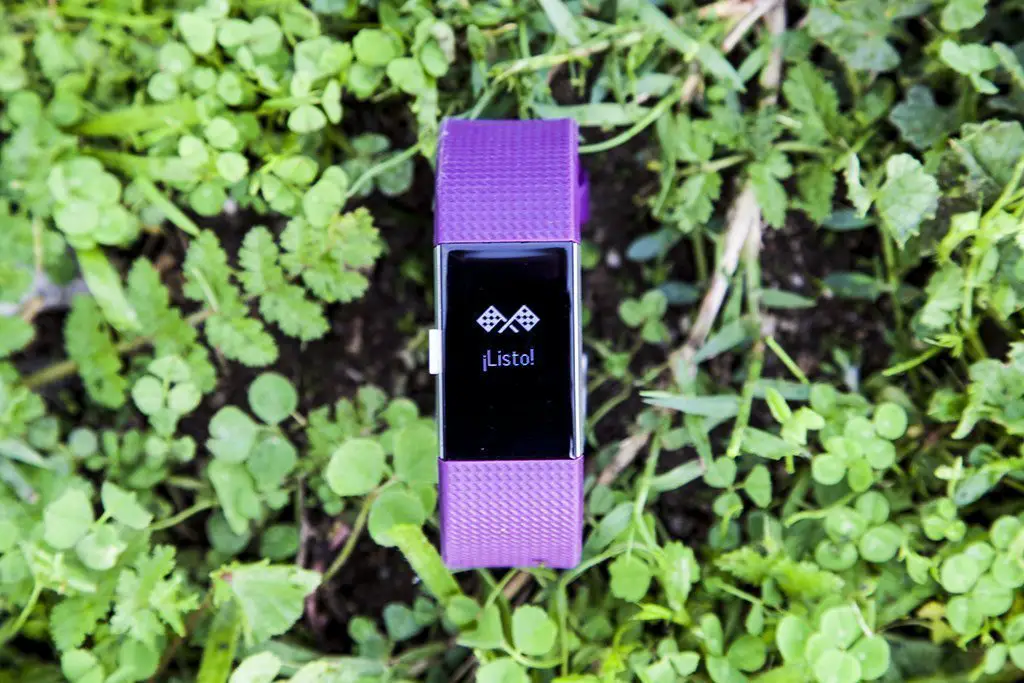











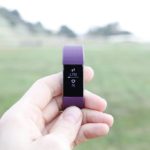
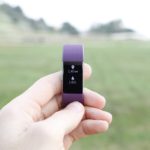
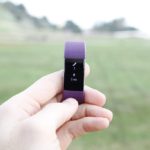
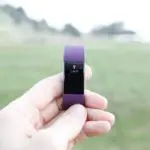
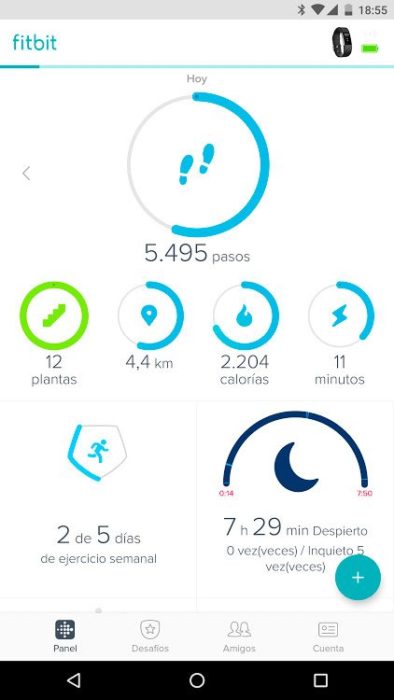
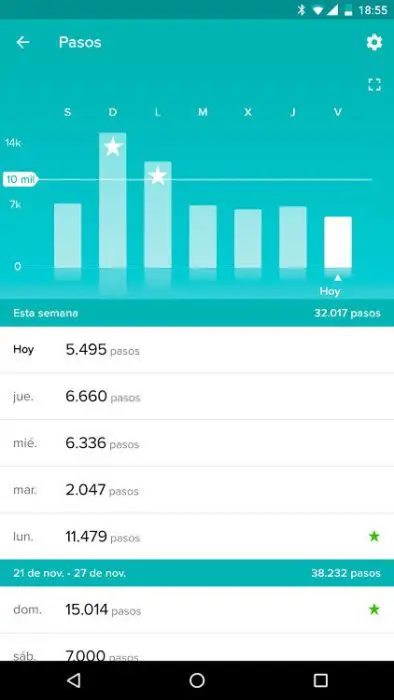
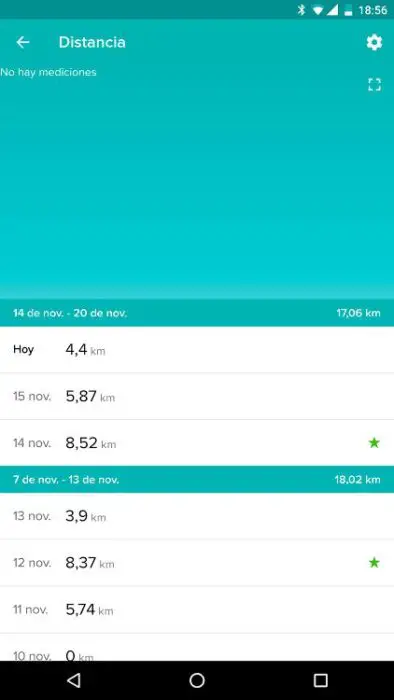


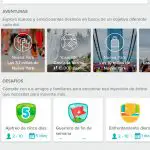



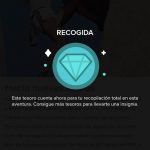
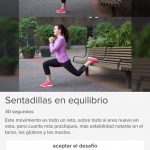


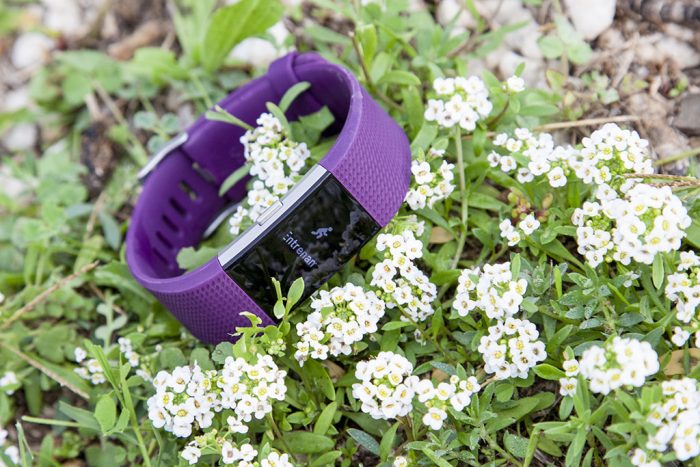

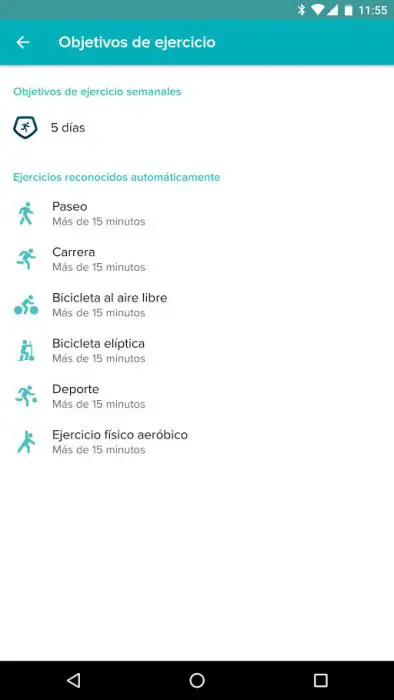
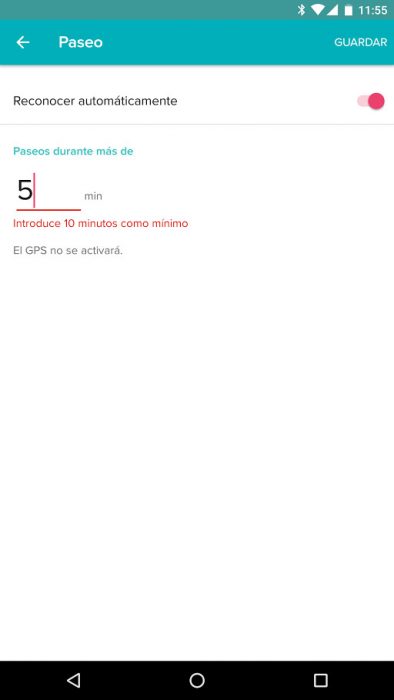
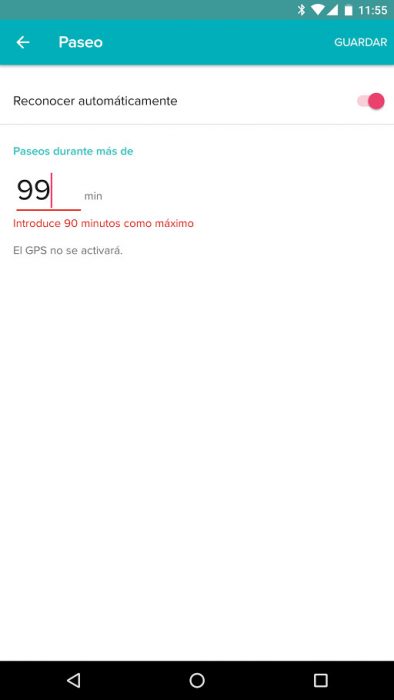

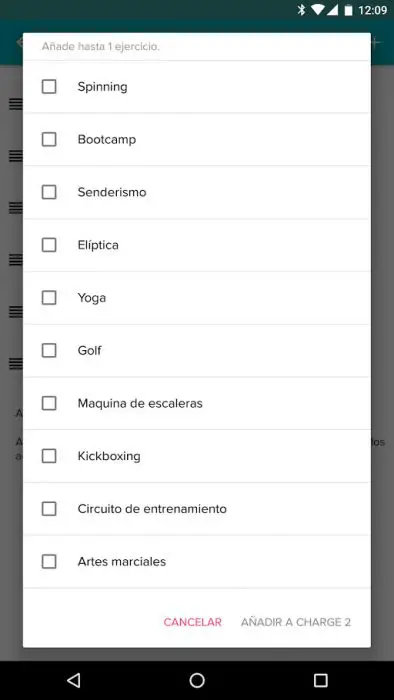



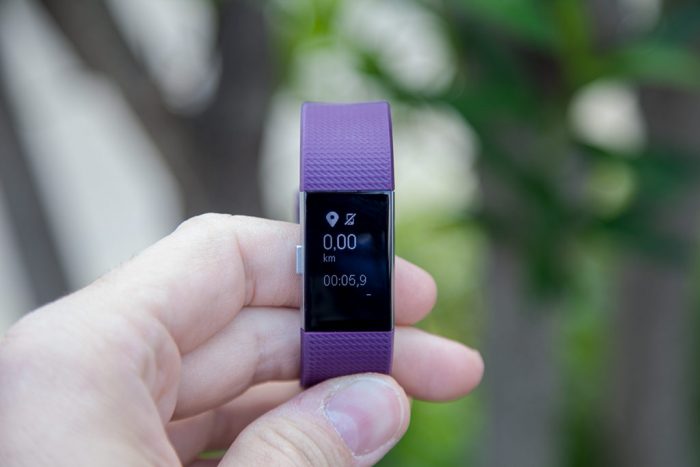
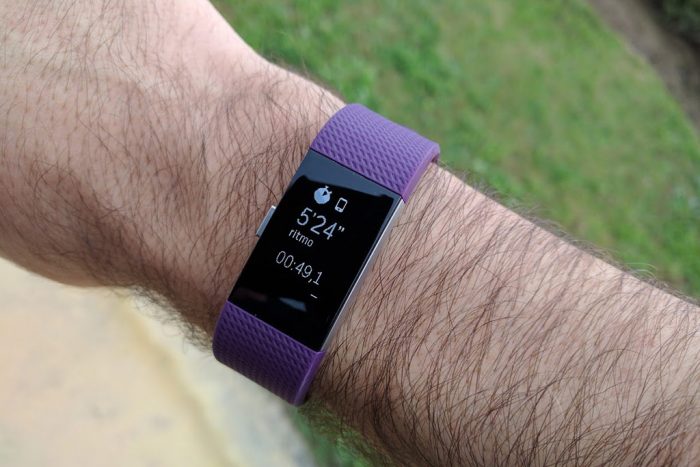

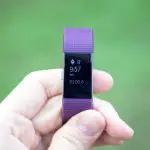

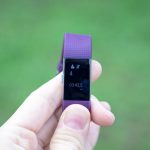
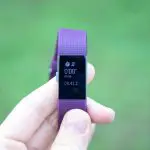
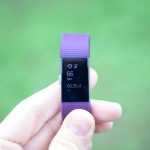
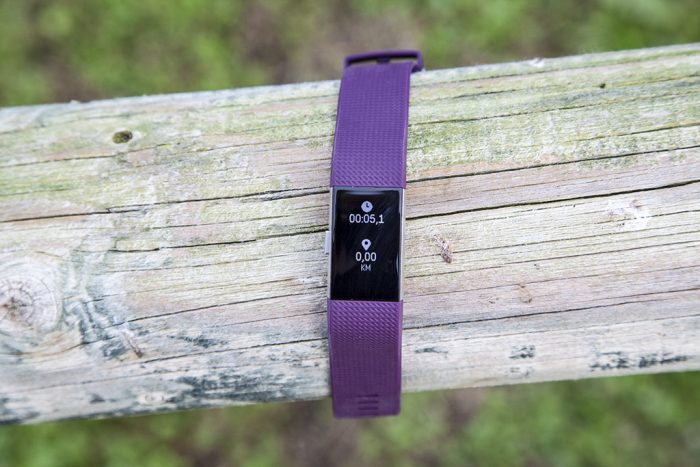









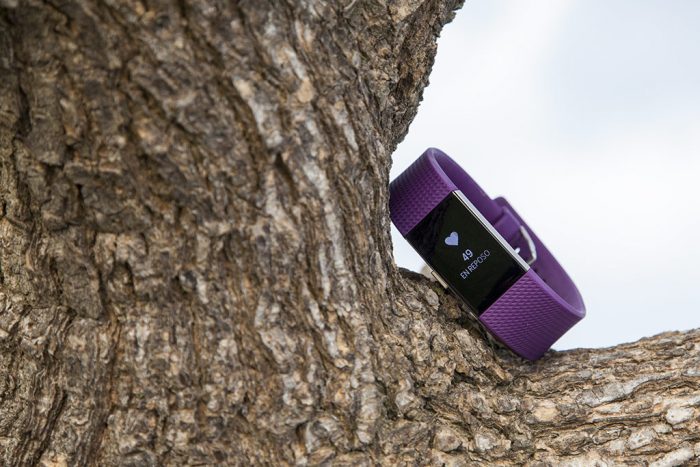






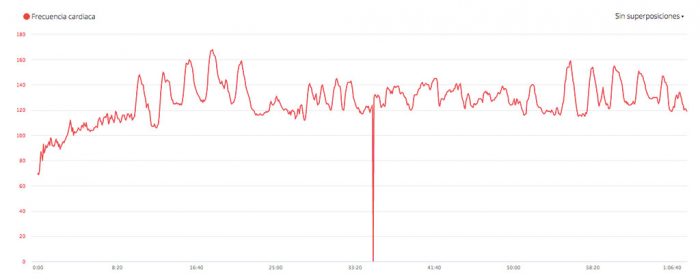

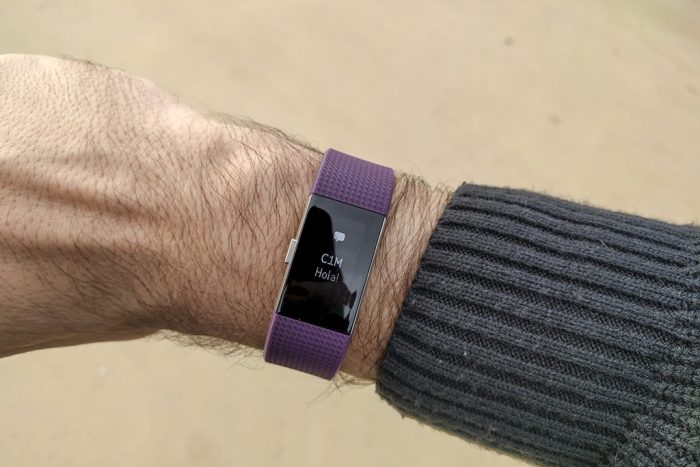
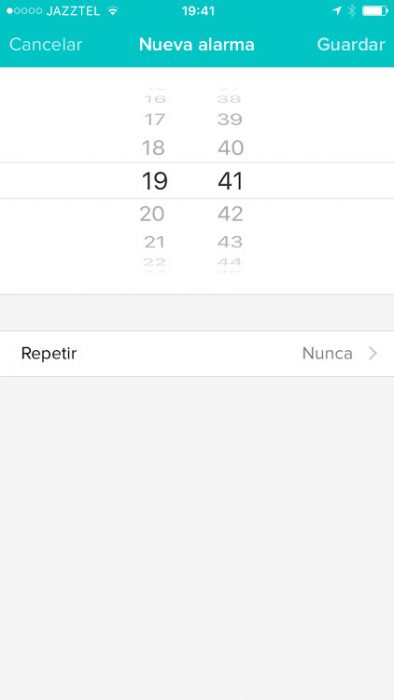
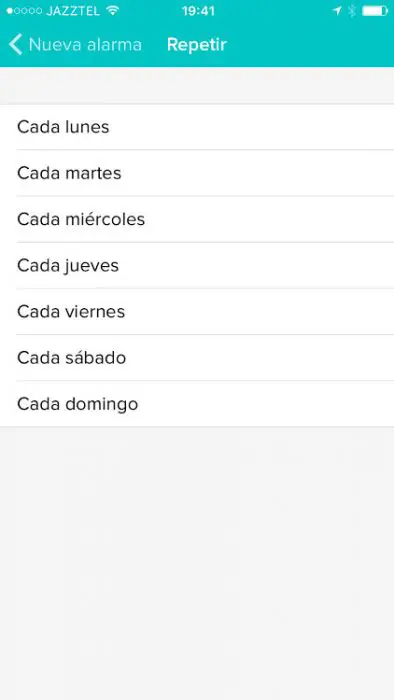










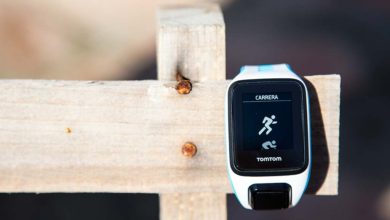
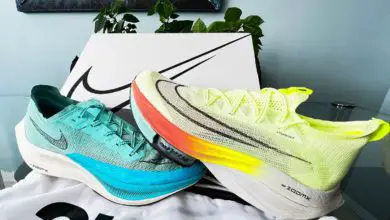
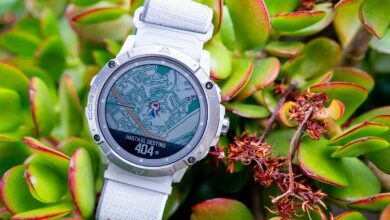
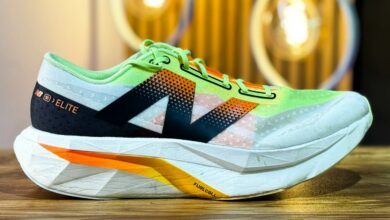
Hola Eduardo, primero que nada darte las gracias por tus artículos y la información tan valiosa que nos aportas.
Sobre la pulsera esta, me gustaría saber si cuando estás realizando alguna actividad, en mi caso sería correr, para ver la FC o el tiempo, habría que pulsar el botón o tocar la pantalla o se ve directamente?
Un saludo y gracias.
Feliz Navidad a tod@s.
La pantalla por defecto está apagada, pero responde al giro de muñeca. Por tanto se ilumina cuando levantas la mano para ver los datos.
Hola nuevamente Eduardo. Entre la vivosmart HR y esta Charge 2, al margen de que ninguna de las dos tienen resultados satisfactorios en piscina, ¿ Cuál es mejor?
Gracias y saludos
En aplicación e interacción, Fitbit es mejor. Su gran pega es la ausencia de notificaciones del teléfono. Si no te importa este detalle, creo que la Fitbit es mejor producto (y con mayor calidad de fabricación).
Hola Eduardo, en principio agradecer la aportación que haces para los que nos iniciamos en este mundillo del deporte y la tecnología. Y al hilo de este tema, he decidido adquirir una pulsera de actividad y leyendo la disección que haces del Fitbit Charge 2 (precio:120€), me surge la duda si optar por esta o bien inclinar la balanza hacia la Garmin vivosmart HR (idéntico precio que la Fitbit) o el A360 de Polar (sobre 10€ más), ¿que me recomendarías entre estas tres opciones? con sus pros y con sus contras…entiendo que quizás sea cuestión de gustos…
Agradecerte de antemano tu atención y a la espera de tus consejos, recibe un saludo. Feliz año.
Rafael García.
Yo optaría entre Fitbit (mejor app) o Garmin (resistencia al agua, notificaciones móviles). Creo que la A360 está en tierra de nadie y salvo por la pantalla, no destaca en nada más.
Hola Eduardo. Otro gran analisis! Yo tengo una pregunta, al poder seleccionar deporte cuando inicias un entrenamiento, por ejemplo pesas, sigue contando un movimiento de una mancuerna como si fuera un paso? La charge hr por ejemplo no sabe si estas andando o levantando una pesa.
Gracias de antemano!
Tambien querria saber si el tema de conectarla al gps del telefono ayudaria en el conteo de pasos en el caso del gimnasio y las pesas.
Un saludo crack!
Los pasos se contabilizan por el acelerómetro, por lo que cualquier movimiento que se asemeje lo contará como tal.
En cuanto al GPS, es solo para actividades de exterior.
Muy buenas tardes Eduardo,
Ante todo darte las gracias por estas críticas, son muy útiles y resultan de gran ayuda cuando te tienes que decidir por una pulsera de actividad.
Dicho esto, paso a hacerte mi consulta:
Quiero una pulsera de actividad para el día a día que sea fiable, resistente y de calidad y además que me valga para hacer spinning.
Estuve mirando la Garmin Vivosmart HR pero ahora estoy dudando entre esta y la Fitbit Charge 2. Sé que la segunda no es resistente al agua, para mí en principio no es problema. He leído que es más fiable, que no se le va tanto la pinza y que es una de las mejores del mercado, además hoy en día hay unos 8 euros de diferencía entre una y otra.
Pues eso, que necesito una que me dé fiabilidad y resistencia durante el día y durante los entrenamientos de spinning.
Me puedes ayudar a decidir??
Mil gracias y una vez enhorabuena por tu página
En prestaciones son muy similares. Garmin cuenta con mejores notificaciones de móvil, mientras que la Fitbit tiene mayor calidad de construcción y su app considero que es mejor para el uso de este tipo de dispositivos. Si no valoras las notificaciones, Fitbit es mejor opción.
Muchas gracias por la respuesta! La Fitbit es la que me llama más la atención, la verdad! Has podido probarla al hacer ciclo indoor??
Gracias!
Sí, la he usado haciendo rodillo. Si simplemente quieres datos de frecuencia cardíaca no tendrás problemas.
Mil gracias. Acabo de comprarla, qué ilusión!! Ojalá no me decepcione!!
Hola, se puede sincronizar con endomondo para que las actividades realizadas por la fitbit aparezcan en endomondo?Gracias y un saludo
No, no es posible